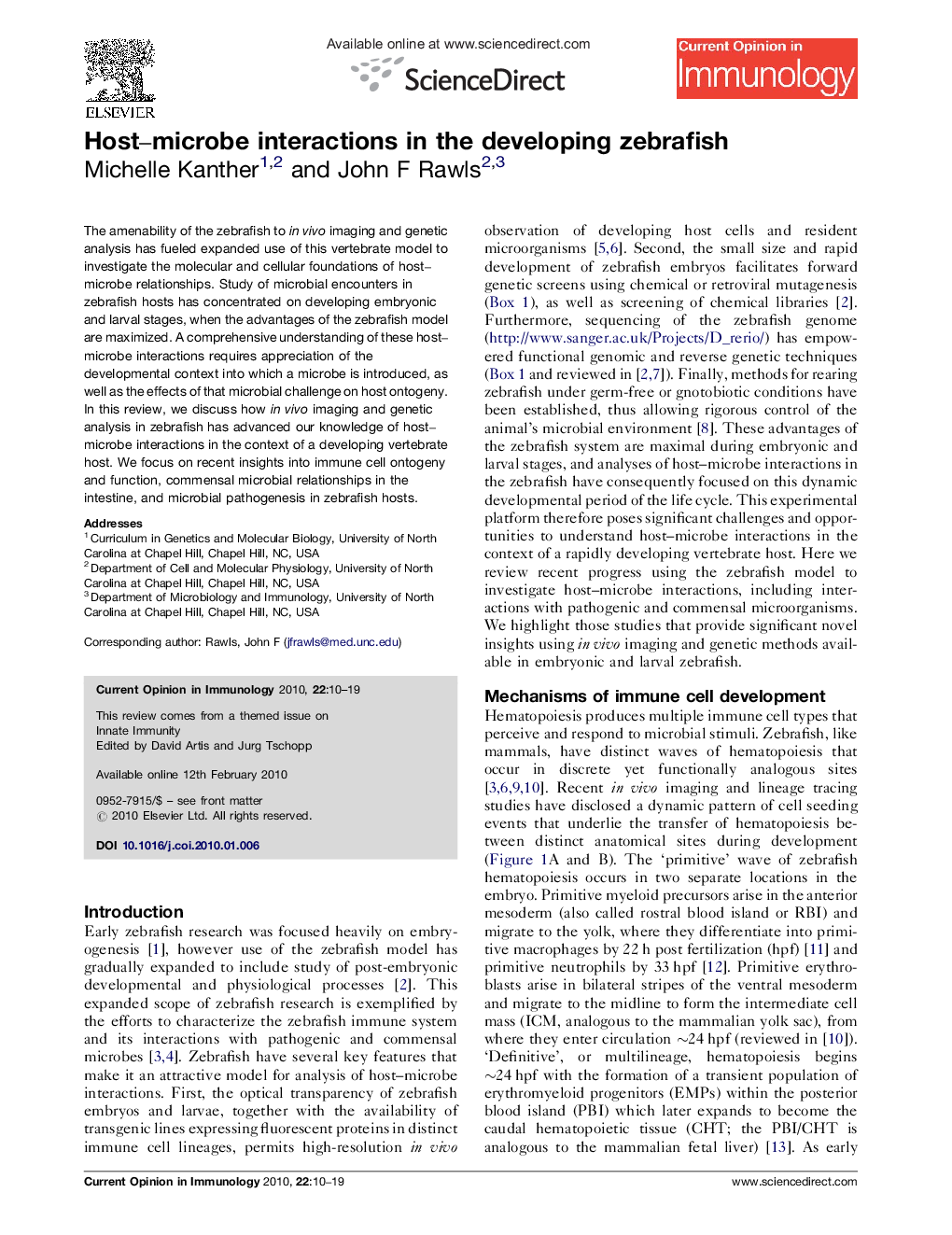| Article ID | Journal | Published Year | Pages | File Type |
|---|---|---|---|---|
| 3346089 | Current Opinion in Immunology | 2010 | 10 Pages |
The amenability of the zebrafish to in vivo imaging and genetic analysis has fueled expanded use of this vertebrate model to investigate the molecular and cellular foundations of host–microbe relationships. Study of microbial encounters in zebrafish hosts has concentrated on developing embryonic and larval stages, when the advantages of the zebrafish model are maximized. A comprehensive understanding of these host–microbe interactions requires appreciation of the developmental context into which a microbe is introduced, as well as the effects of that microbial challenge on host ontogeny. In this review, we discuss how in vivo imaging and genetic analysis in zebrafish has advanced our knowledge of host–microbe interactions in the context of a developing vertebrate host. We focus on recent insights into immune cell ontogeny and function, commensal microbial relationships in the intestine, and microbial pathogenesis in zebrafish hosts.
